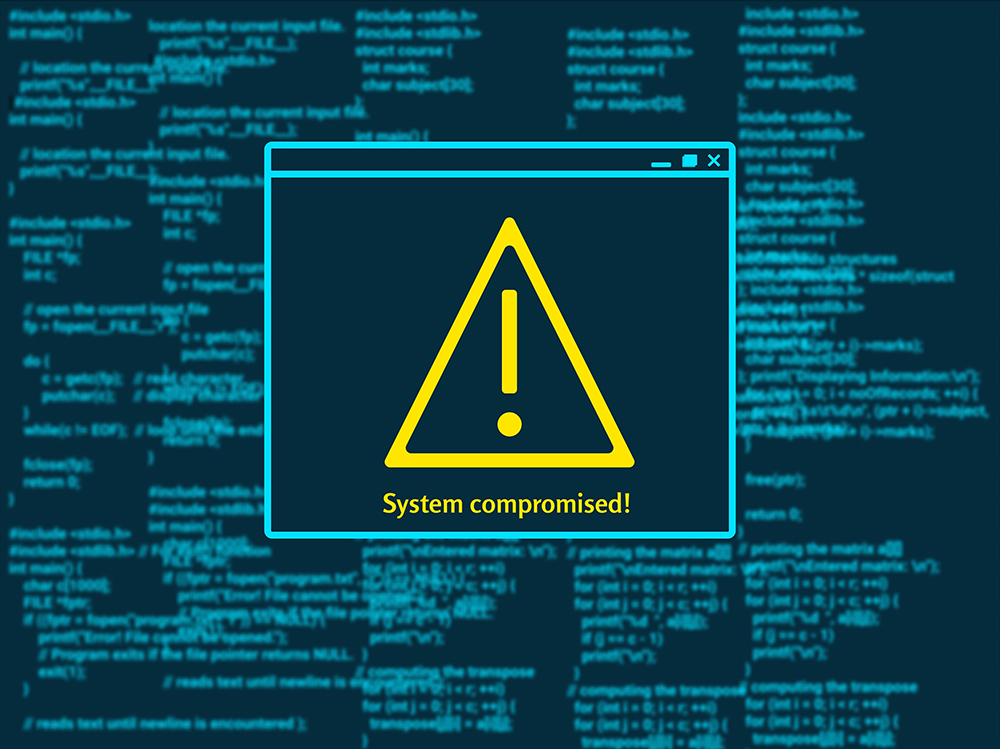When it comes to cyber attack detection and prevention, the best way to reduce the impact of cybercrime is to have a layered approach to security. For example, we must address network security, application security, web security, database security, identity management, and user account security. It is imperative to understand cybersecurity basics, including how to protect your business from cyberattacks so that your entire network doesn’t get compromised.
This can be done by ensuring you know all the latest developments and preventative measures in this area. It also helps if you have a cybersecurity professional from whom you can get advice to implement these measures into your business. The following article will help you understand more about the importance of cybersecurity.
Table of Contents
Cyber Security Basics And Overview
Cybersecurity is one of the most important aspects of any company’s operations. Small businesses often don’t have the resources or expertise to secure their systems properly. A successful cyber attack can destroy a company’s reputation, cause severe damage to its finances, and even put lives at risk. To avoid such an occurrence, small businesses must learn as much as possible about cyber security.
Furthermore, cybersecurity is a very complex field. Many different types of threats can affect companies, ranging from simple viruses and worms to sophisticated hacks and application attacks. As well as identifying potential problems, small businesses must learn how to deal with suspicious activity effectively. They should make sure that they have adequate training to ensure that they can quickly respond to any issues that arise.
The first step towards securing your business against cyberattacks is to develop a plan. You need to decide precisely what kind of protection you want to use. For example, some companies rely solely on anti-virus software while others opt for firewalls and other advanced technology. Whatever system you decide upon, you must test it thoroughly before implementing it.
When developing a plan, it is essential to consider your business’s security threats and risks. Some common areas of concern include:
- Identity theft
- Data loss
- Financial losses
- Reputation damage
- Loss of customer data
- Customer confidence
Once you have identified the main threats to your business, you can begin to work out how to address each one. One way to do this is by using a risk assessment tool. These tools allow you to evaluate the likelihood of certain events occurring and determine whether or not you need to take action.
Once you have developed a plan, you must ensure it is implemented correctly. To do this, you will need to hire experts who can provide regular updates on new threats and advise you on how best to tackle them.
As mentioned earlier, there are many different ways that cyber attackers can target a business. One of the most common methods is phishing emails. Phishing emails contain links that appear legitimate but lead users to malicious websites. Once users click on these links, they may unknowingly download malware onto their computers. Another popular method is social engineering. Social engineers trick people into giving up personal information or handing over money.
In addition to preventing cyber attacks, monitoring your network closely is essential. This allows you to spot any suspicious activity immediately. It is also helpful if you have access to a remote support service. Many companies offer 24-hour monitoring services, which allow you to contact experts whenever you feel something has gone wrong.
Keeping Up With Malware Growth
Malware growth continues to accelerate. The number of malware threats in 2021 increased by over 134%, and as attackers continue to find new ways to exploit vulnerabilities, they can create more sophisticated threats. This increase in complexity means that traditional approaches aren’t as practical anymore. Standard antivirus software can only scan files for known viruses. Newer versions include anti-malware technology that looks for unknown threats. Unfortunately, malware detection technology hasn’t kept pace with the increasing sophistication of malware.
As a result, most organizations still rely on manual processes to remove malware. These methods are slow and inefficient. They involve manually reviewing suspicious files and removing them using specialized tools.
With the growing threat posed by malware, it’s crucial to stay ahead of the malware detection game. To do so, you must constantly update your defenses. You should regularly review your security posture and identify any gaps in your protection. Then, take steps to close those gaps to keep cybersecurity threats out.
One way to stifle cybersecurity threats is through regular penetration testing. Penetration tests allow you to test your current security solutions against real attacks. By identifying weaknesses, you can improve your defenses before an attacker finds a way to exploit them.
Another option is to use automated scanning tools. These tools look for signs of infection without requiring human intervention. While they won’t catch everything, they’re helpful for quickly finding infections.
Finally, you can use machine learning techniques to detect malware. Using machine learning algorithms, cyber attack detection learns from previous data sets and makes predictions based on attack patterns. As such, they work well at detecting previously unseen threats. However, they require constant updating to remain effective.
To prevent future malware outbreaks, you must be proactive and continually train your defenses. Regularly updating your defenses ensures you’ll be ready when hackers strike next time.
Detection Approach Beyond the Perimeter
Companies should implement prevention technologies to protect themselves from potential threats within their network. However, they must also know how attackers move laterally throughout their networks. Detection technologies help them identify these lateral moving security threats.
Unfortunately, a cybersecurity incident happening at your business is inevitable, but that doesn’t mean that it can’t lessen the blow. This means that we must always be prepared to deal with cyber threats by protecting ourselves from internal and external attacks.
Why You Should Add Detection To Your Security Strategy
Detection-based security focuses on using detection measures to detect attacks as soon as possible. Once an attack has been detected, it’s easier to prevent damage than to repair it after the fact. For example, consider a company whose website was compromised. An attacker used the site to send out spam emails. Afterward, the company had to spend time cleaning up the mess. It would’ve been better if the system had detection measures to identify the problem earlier.
Detecting attacks early also helps protect against insider threats. Many employees will download third-party apps onto their work computers that often contain backdoors or spyware. When the employee uses their device at home, the app sends information back to the attacker. Detecting attacks before they happen makes it easier to prevent damage.
This approach isn’t perfect, though, because some attacks go undetected. Sometimes hackers use social engineering and trick employees into downloading malicious software. Detecting such attacks requires more advanced technology.
Cybersecurity has become an increasingly complex issue. Hackers constantly find new ways to break into networks, steal data, and cause damage. There are many different ways to defend against these attacks. But there isn’t just one way to completely protect your organization.
Detection helps you identify potential problems before they occur. Once you’ve identified a threat, you can determine whether it’s worth responding to. For example, if a hacker gains access to your email server, you may want to shut down the account until you’re sure he doesn’t have anything valuable. Or, if someone tries to log into your database with a stolen password, you might want to lock the account so no one else can gain access.
Host intrusion detection systems (HIDS) also allow you to respond more effectively after an attack occurs. When hackers infiltrate your network, they often leave behind evidence that can help you figure out who did it and how they accessed your network. You can stop the problem before it escalates by detecting this type of activity.
But even with advanced technology, there are limits. A hacker could easily bypass detection by using multiple devices and sophisticated skills. They could also cover his tracks by deleting files that reveal his identity. So, while detection-based security provides some benefits, it doesn’t offer all of them.
The Benefits of Prevention-Based Security
Prevention-based security works because it prevents bad things from happening. This approach focuses on keeping unauthorized people off your network. In other words, it keeps intruders away from sensitive data and stops them from accessing your network.
Preventing attacks is much easier than trying to recover once they happen. Even if you don’t catch every attempt, it will be much harder for hackers to succeed. And if they do manage to penetrate your defenses, you’ll already be aware of the situation. That means you can respond faster and be more effective. Preventing attacks also makes sense from a financial perspective. If you detect a breach early, you can contain the damage. Reducing the impact of an attack can save you money.
While prevention-based security is adequate, it does require some investment up front. It would help if you spent time training employees and developing policies. However, the benefits far outweigh the costs. Preventing attacks is cheaper than recovering from them. And when you prevent attacks, you can focus on mitigating risks instead of reacting to breaches. So, while prevention-based security requires a lot of work upfront, it pays dividends later. It’s well worth the effort.
Cyber Attack Detection And Prevention Hybrid Approach
Hybrid approaches combine detection and prevention methods, giving you maximum security. For example, one common hybrid approach involves using a honeypot. Honeypots are systems designed to attract attackers. Once an attacker connects to the honeypot, it captures the connection. Then, it identifies the attacker. Once the attacker is identified, the system blocks them from connecting to the rest of the network. This prevents further attacks.
Another common hybrid approach involves using intrusion detection systems (IDS). IDSs monitor traffic between your computer and other networks. If something suspicious happens, the IDS alerts you. You can then decide whether or not to investigate further.
If you’re concerned about privacy issues, you can configure the IDS only to alert you when certain types of activity occur. For example, you might want to be alerted whenever someone tries to access a file over FTP. But you wouldn’t like to be notified whenever someone downloads a picture. If you have concerns about performance, you can configure the system only to notify you when specific events occur. For example, if someone attempts to log into your server but fails, you won’t receive any notifications.
As another example, you might want the system only to notify users logged in via SSH. So, if someone logs into your server via SSH but later disconnects, you won’t get any notifications. Hybrid approaches offer several advantages.
- They help reduce false positives. As I mentioned earlier, detection alone can lead to many false alarms.
- They allow you to tailor the notification process. With a detection-only system, you’ll always receive alerts. Even if you don’t care about those alerts, you still receive them.
- They give you control over the level of detail. You can choose which events to watch. And you can set up different notification levels depending on the event’s importance.
- They help ensure that you don’t miss anything. Because they use detection and prevention techniques, they catch most attacks before reaching your servers.
- They make it easier to detect attacks that involve multiple steps. For example, if you notice someone trying to connect to your server via SSH, you know that person was probably looking at sensitive information.
The Bottom Line
Cybersecurity experts have said that while detection and prevention-based security offer many benefits, they don’t offer everything. Hybrid approaches address this problem by combining detection and prevention techniques. They do so in ways that make sense for your business’s approach to security.
In addition, they help reduce false-positive alerts, cybersecurity risk, incident responses, and real attacks. They can even eliminate them. Hybrid approaches combine detection and prevention-based security that help address some of the weaknesses of either technique alone.









Recent Comments